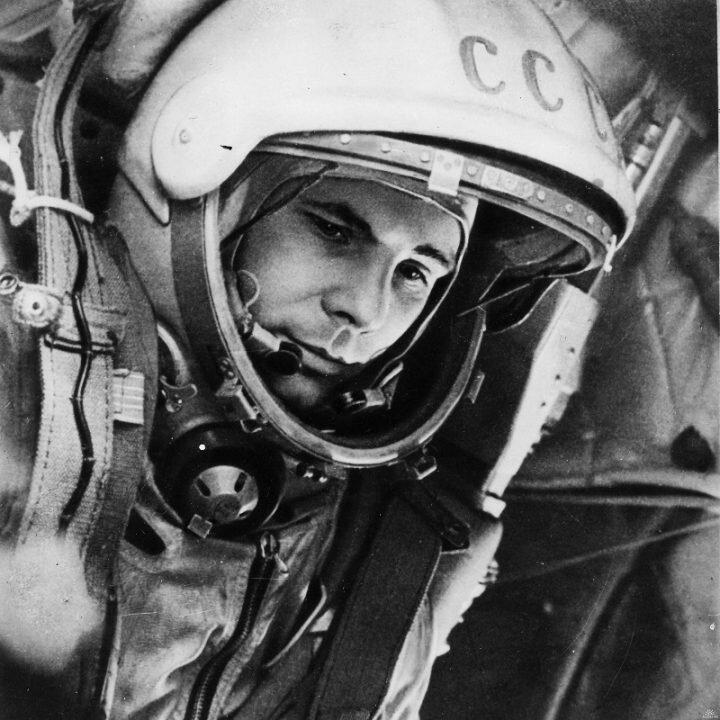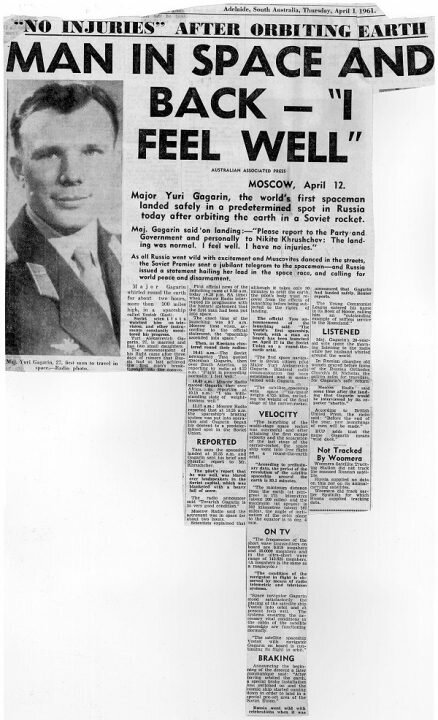Last updated April 13, 2018 at 4:31 pm
The space flight hero launched on 12 April 1961 to become the first human to orbit the Earth.
This week marked the anniversary of Soviet cosmonaut Yuri Gagarin’s history-making flight to become the first human to ever orbit Earth.
At 6:07am UTC on 12 April 1961, Gagarin’s Vostok 3KA capsule launched from Site No. 1 at the Baikonur Cosmodrome, in modern-day Kazakhstan. As the rocket lifted off, the lead rocket engineer Sergei Korolev radioed “Preliminary stage….. intermediate….. main….. lift off! We wish you a good flight. Everything is all right.”
Gagarin replied, “Let’s go!”
Video from the launch:
During the mission
As the effect of weightlessness on a person wasn’t known the capsule had few manual controls – most of the spacecraft control was either performed automatically or from the ground.
Ten minutes after launch Gagarin reached orbit, radioing “The craft is operating normally. I can see Earth in the view port of the Vzor. Everything is proceeding as planned”
Around 1 hour and 5 minutes, and nearly 1 orbit of Earth later, Gagarin’s spacecraft began the reentry procedure. At 7:55 UTC and 7 km above the ground, the hatch of the spacecraft was released and Gagarin ejected. Parachuting back to Earth, Gagarin and the capsule both eventually landed in the Saratov region, around 2800 km west of the planned landing zone.
Upon landing, Gagarin reportedly came across a farmer and her daughter. Wearing a bright orange suit and a large white helmet and having come from the sky, Gagarin had to reassure them he was human. “When they saw me in my space suit and the parachute dragging alongside as I walked, they started to back away in fear. I told them, don’t be afraid, I am a Soviet citizen like you, who has descended from space and I must find a telephone to call Moscow!”
In total, Gagarin’s mission completed one orbit of Earth in around 108 minutes, with a maximum altitude of 327 kilometres.
After the mission
Yuri Gagarin became an international hero, and was feted in Red Square in front of massed cheering Russians. He also toured internationally, including visits to Brazil, Egypt, Italy, Canada and England, promoting the Soviet achievement. He also met with the astronauts involved in the American Gemini IV mission following their flight.
One downside of this fame was that Gagarin was deemed too valuable to risk on another space flight. He was removed from active flight duty, and returned to the space program assisting in the design and development of spacecraft. By 1963 he had been promoted to Colonel and was Deputy Training Director at the cosmonaut training base, Star City.
On 27 March 1968, Gagarin was on a routine training flight in a Mig-15 fighter jet when he lost control, crashing near a small town near Moscow. Both he and instructor Vladimir Seryogin perished. The reasons for the crash are controversial.
Gagarin’s remains were entombed in the walls of the Kremlin, a high honour befitting the national hero.
Site No.1 at Baikonur has now been renamed Gagarin’s Start in honour of the mission, and astronauts from all countries launching from Baikonur today recreate Gagarin’s last minute toilet stop on their way to the launchpad.
Here’s how one Australian newspaper reported the Vostok 1 mission at the time (click to enlarge)































































































































































































































































































































































































































































































